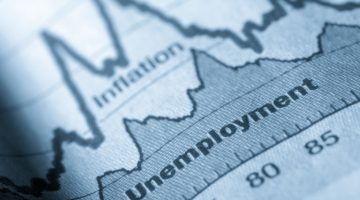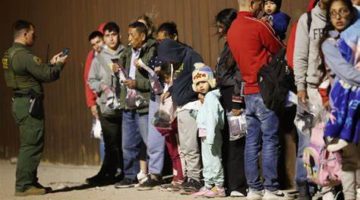MIAMI — One of the opening images in “Caribbean: Crossroads of the World” features a massive nuclear submarine breaking the surface of what appears to be a cold northern coastline, with evergreens that would never thrive in tropical weather.
The painting by Cuban-born Julio Larraz imagines the technological evolution of semi-submersibles already used in the tropics for drug smuggling. Curator Elvis Fuentes hung it next to three artworks depicting Haitians crowded onto crude boats, and together the images show a Caribbean on the move – still carrying the stains of slavery and smuggling, perhaps, but in no way restricted by geographical boundaries.
“People think of just the islands. The islands have their own name, the Antilles. The Caribbean is the sea. One of the concepts we’re developing in the show is wherever the water goes, we have to go,” said Fuentes, guest curator at Pérez Art Museum Miami.
The survey of Caribbean art and history opened last month and includes more than 180 paintings, sculptures, photographs, videos and art installations. Fifty works have been added to the exhibit since its debut at three New York City museums two years ago.
It mixes historical artwork dating to Haiti’s revolution at the turn of the 19th century with contemporary pieces by living artists from the islands and elsewhere.
Fuentes organized the exhibit by theme: the Caribbean’s fluid environment, its economic shift from plantations to oil and tourism, its relationship with Europe and the U.S., and its exoticism, a colonial legacy that its artists still face today.
He highlights lost connections between the Caribbean and the rest of the world, such as Danish colonialism in the New World, a subject explored in a video installation by Jeannette Ehlers, whose parents are from Denmark and Trinidad and Tobago.
Ehlers’ reflection dances to a waltz across the mirrors that line an empty ballroom in the Government House of St. Croix, a landmark of Danish colonial architecture that she fills with a haunted sense of history.
“The center of Copenhagen is built from money from this industry, the slave trade. It’s amazing because when you come to St. Croix you can tell that the Danes were there, but if you come to Copenhagen you don’t know it. It’s invisible,” Ehlers said.
When “Caribbean: Crossroads of the World” debuted two years ago at El Museo del Barrio, Queens Museum and The Studio Museum in Harlem, New York City was heralded as “one of the largest Caribbean cities.” In its perhaps more natural home in Miami, the exhibit is complemented by other installations highlighting this city’s Caribbean connections.
A fleet of colorful boats and rafts by Guyana-raised artist Hew Locke greets visitors to the waterfront museum with a subtle nod to the migrants that routinely try to reach Florida by sea. A separate gallery currently is dedicated to large-scale, glittering landscapes by Haitian-born Edouard Duval-Carrie, whose studio is in the heart of Miami’s Little Haiti.
Duval-Carrie has a pink-tinged portrait of Haitian revolutionary hero Toussaint L’Ouverture in “Caribbean: Crossroads of the World,” and he has explored themes similar to Fuentes’ in a series of “Global Caribbean” exhibits at the Little Haiti Cultural Center over the last five years. He hopes to see PAMM develop a specialty in Caribbean arts and complement Miami’s growth as an international gateway.
“New York might be the biggest Caribbean city, but it’s also biggest, you know, whatever – the biggest European, the biggest Jewish, the biggest this, the biggest that. At least we have a particularity here,” Duval-Carrie said. “Truly, the city has become a very important gathering point for all of the people in the Caribbean, to the point that even the airplanes, to travel from one island to the next, stop in Miami no matter how far it gets.”
“Caribbean: Crossroads of the World” runs at PAMM through Aug. 17.









No Comment